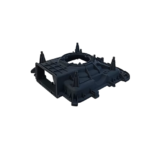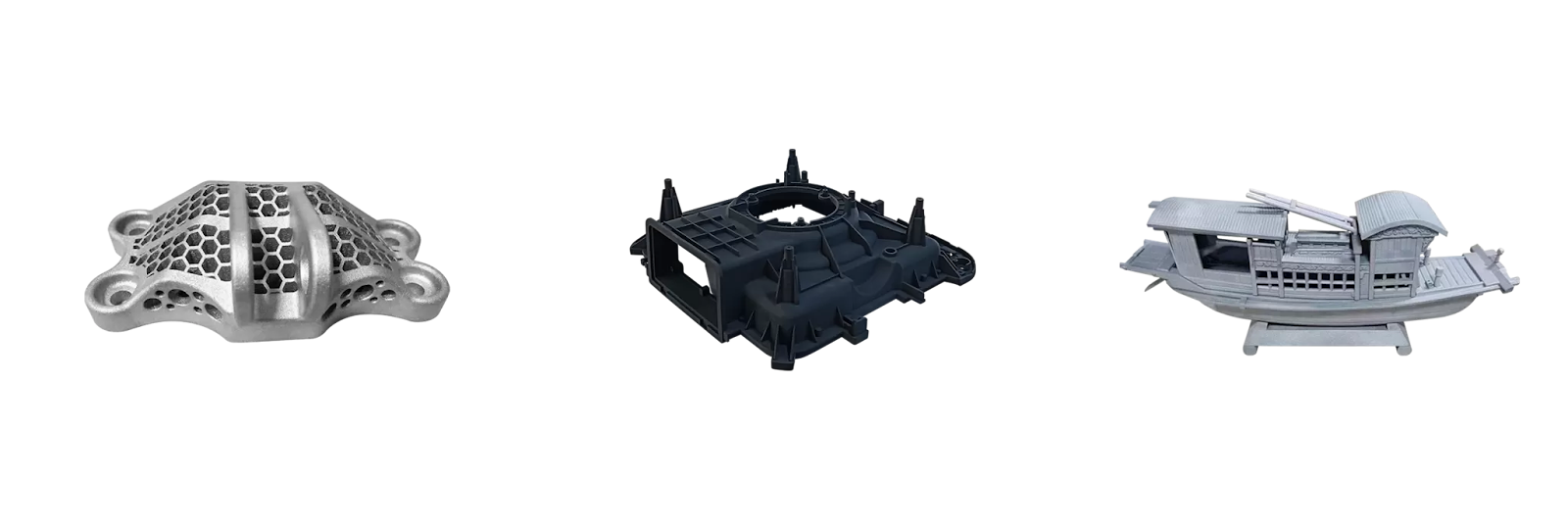Ever watched a master chef flawlessly recreate a dish, night after night, regardless of the chaos around them? Or seen an emergency response team move with terrifyingly precise coordination? That’s not magic. It’s the power of a Protocolo Operacional Padrao – your secret weapon against chaos and inconsistency.
Think about it. How many times have you seen a brilliant process fall apart because someone skipped a step, used the wrong tool, or just… winged it? It happens. More often than we’d like to admit. Honestly, the sheer amount of wasted time, money, and goodwill due to inconsistent execution is staggering. That’s where the POP steps in – not as a bureaucratic hurdle, but as the blueprint for predictable, high-quality results.
What Exactly IS a Protocolo Operacional Padrao (POP)? Beyond the Jargon
Let’s ditch the corporate speak. A Protocolo Operacional Padrao (POP), or Standard Operating Procedure (SOP), is essentially a detailed, step-by-step instruction manual for a specific task or process within an organization. It’s the “how” behind the “what.”
Think of it like a recipe. A recipe tells you precisely what ingredients (tools/resources) you need, in what order to add them (sequence of actions), how long to cook it (critical parameters), and how to know if it’s done right (verification/inspection). A POP does the same for, say, calibrating lab equipment, admitting a patient, handling a customer complaint, or shutting down a production line safely.
The core idea? Uniformity. It ensures that no matter who performs the task, when they do it, or where it’s done, the outcome is consistent, reliable, and traceable. That’s the gold standard, isn’t it?
Why POPs Aren’t Just Paperwork: The Tangible Benefits You Can’t Ignore
Some folks groan at the mention of SOPs. “Red tape,” they mutter. “Slows us down.” Well, let me tell you, that’s a short-sighted view. Done right, POPs are liberators, not jailers. Here’s the real juice:
- Slashing Errors & Boosting Quality: Humans make mistakes. It’s inevitable. But a well-crafted POP acts as a safety net, guiding users through critical steps and checkpoints. Fewer errors mean higher quality output, every single time. Consistency is quality.
- Training & Onboarding Lifesaver: Imagine training new staff without a POP. It’s like playing a game of telephone – details get lost, interpretations vary. A POP provides the single source of truth, dramatically speeding up training and ensuring everyone starts on the same page. New hire panic? Significantly reduced.
- Compliance & Audit Smoothener: Operating in regulated industries (healthcare, pharma, finance, aviation, environmental)? Regulators love POPs. They demonstrate due diligence, provide clear evidence of procedures, and make audits less of a nightmare. It’s your documented proof of doing things the right way.
- Knowledge Preservation: What happens when your star employee retires or wins the lottery? If their expertise only exists in their head, you’re sunk. POPs capture that critical institutional knowledge, making the organization resilient to turnover.
- Risk Mitigation: From safety hazards to financial missteps, unclear procedures breed risk. POPs identify critical control points, safety checks, and approval steps, actively reducing the chance of accidents, fraud, or costly blunders. Safety first? POPs make it possible.
- Continuous Improvement Foundation: You can’t improve what you can’t measure or define. A documented POP provides the baseline. When things go wrong (or right!), you can analyze the process as it was designed and make targeted improvements. It turns guesswork into science.
- Efficiency Gains (Yes, Really!): While creating them takes effort, POPs eliminate the constant reinvention of the wheel. People spend less time figuring out how to do something and more time actually doing it correctly. Streamlined workflows emerge.
In my experience, companies that dismiss POPs as unnecessary overhead are often the ones drowning in fire drills and quality issues. The initial investment pays back tenfold in reduced rework, faster training, and fewer costly mistakes.
Where POPs Rule: Industries That Live and Die By Them
POPs aren’t confined to one corner of the working world. They’re the backbone of reliability in high-stakes environments:
- Manufacturing: Calibration procedures, assembly line sequences, quality control checks, machine changeovers, lockout-tagout safety protocols. POPs ensure product consistency and worker safety. One misstep here can mean recalls or injuries.
- Healthcare: Patient admission/discharge, medication administration, surgical protocols, infection control, lab testing. Lives literally depend on the precision and consistency enforced by POPs.
- Aviation & Aerospace: Pre-flight checks, maintenance procedures, emergency response protocols. The margin for error is zero. POPs are sacrosanct.
- Laboratories (Research & Clinical): Sample handling, testing methodologies, equipment operation, data recording. Scientific integrity hinges on reproducible processes defined in POPs.
- Public Safety & Security: Emergency response protocols (fire, police, EMS), crime scene processing, evidence handling. Clarity and speed under pressure are non-negotiable.
- Environmental Management: Sample collection, pollution monitoring, spill response, waste handling. Regulatory compliance and environmental protection demand strict adherence to POPs.
- Finance & Banking: Transaction processing, fraud detection, compliance checks (KYC/AML), loan approvals. Mitigating financial risk requires ironclad procedures.
- Food Service & Hospitality: Food safety (HACCP), cleaning/sanitization, customer service recovery. Protecting brand reputation and customer health relies on consistent execution.
Bottom line? If consistency, safety, quality, or compliance matter (and when don’t they?), POPs are essential.
Anatomy of a Killer POP: What Goes Inside?
Not all POPs are created equal. A truly effective one is clear, concise, and actionable. Here’s the typical structure:
- Title: Precise and descriptive (e.g., “POP-023: Calibration of pH Meter Model X200”).
- Purpose: Why does this procedure exist? What outcome does it achieve? (Keep it brief!).
- Scope: Where and when is this procedure used? What does it cover (and importantly, what does it not cover)?
- Responsibilities: Who is responsible for performing, reviewing, approving, and maintaining this POP? Name roles, not individuals.
- Required Materials/Equipment: List everything needed – tools, software, forms, PPE, specific materials. No guesswork allowed.
- Procedure (The Meat): The step-by-step instructions. This is the core!
- Use numbered lists for sequential steps.
- Be granular but not patronizing.
- Specify critical parameters (times, temperatures, settings, tolerances).
- Include “what-if” scenarios or troubleshooting tips where relevant.
- Define clear inspection/verification points. How do you know the step was done correctly?
- Use visuals! Photos, diagrams, flowcharts (yes, even simple ones) are worth a thousand words.
- Safety Warnings & Precautions: Highlight any hazards and the necessary safety measures. Bold these! Make them impossible to miss.
- References: Link to related documents, regulations, standards, or other POPs.
- Revision History: Track changes (date, version, who changed what, approval). Essential for control.
Pro Tip: Write instructions using active voice and imperative mood (“Calibrate the meter,” “Record the result,” “Wear safety goggles”). Avoid passive voice like the plague – it breeds ambiguity.
Also Read: Cloud Modernization: A Roadmap for Moving from Legacy to Scalable
SOP vs. Policy vs. Checklist: Cutting Through the Confusion
These terms get tossed around interchangeably, but they serve distinct purposes. Let’s clear the air:
| Feature | Standard Operating Procedure (SOP / POP) | Policy | Checklist |
|---|---|---|---|
| Purpose | HOW to perform a specific task/process | WHAT must be done (rules/standards) | VERIFY steps were completed |
| Level of Detail | Highly Detailed (Step-by-step instructions) | Broad Principles & Rules | Simple List of Items/Tasks |
| Focus | Execution & Consistency | Governance & Compliance | Confirmation & Memory Aid |
| Example | “Procedure for Sterilizing Surgical Instruments” | “Policy on Workplace Safety” | “Pre-Flight Safety Checklist” |
| Relationship | Implements specific aspects of a Policy | Governs the creation of SOPs | Derived from / Used with SOPs |
Think of it this way:
- Policy: “All employees must wear safety helmets in the manufacturing area.” (The rule)
- SOP/POP: “Procedure for Inspecting, Fitting, and Maintaining Safety Helmets.” (The how of following the rule)
- Checklist: “Daily Safety Helmet Inspection Checklist” (A tool to verify the SOP steps for inspection were done).
They work together! Policies set the direction, POPs define the execution path, and checklists help ensure nothing slips through the cracks.
Building Your Own POP: A Practical (Not Perfect) Guide
Creating effective POPs isn’t rocket science, but it does require diligence. Forget aiming for perfection on the first draft. Aim for clarity and usability. Here’s a down-to-earth approach:
- Identify the Need: What process is causing errors, delays, inconsistency, or risk? Start there. Don’t try to POP everything at once.
- Gather the Right People: Involve the people who actually do the work. Their frontline knowledge is gold. Also include subject matter experts, supervisors, and maybe quality/risk folks.
- Map the Current Process (As-Is): Observe the process being done. Document every single step, decision point, input, and output. Flowcharts are brilliant for this. Don’t assume, observe. You might be surprised.
- Analyze & Optimize (To-Be): Look for bottlenecks, redundancies, safety risks, and unnecessary complexity. Now is the time to improve the process before you lock it into a POP. Get stakeholder buy-in on the improved flow.
- Draft the POP: Using the structure in Section 4, write the procedure for the optimized (To-Be) process. Be ruthlessly clear and specific.
- Review & Test (Crucially!):
- Have the frontline users review it. Does it make sense? Can they follow it? Is anything missing or confusing?
- Have someone new try to follow the POP while doing the task (a dry run). Watch where they stumble. This is the best way to find gaps!
- Get legal/regulatory/compliance review if needed.
- Approve & Implement: Get formal sign-off. Roll it out with clear communication and training. Explain the why behind it.
- Train, Train, Train: Don’t just email a PDF. Conduct proper training. Demonstrate. Have people practice.
Human Nuance Alert: The first draft will likely have holes. That’s okay! The review and testing phase is where the magic happens. Embrace the feedback. A POP created in an ivory tower without user input is destined to fail. Trust me, seen it too many times.
Avoiding the Shelfware Trap: Implementation & Maintenance
Here’s the dirty little secret: Creating a POP is only 20% of the battle. The real challenge is making sure it gets used and stays relevant. How many beautifully crafted documents gather dust in a binder or a forgotten network folder? Too many.
- Accessibility is Key: POPs must be easy to find when needed. A centralized, searchable digital repository (like a wiki, intranet portal, or dedicated document management system) beats binders on a shelf every time. Think mobile access if relevant.
- Integrate into Workflow: Where possible, embed links to the relevant POP right where the work happens – within a software system, on a digital work instruction screen, or even as a QR code on a machine.
- Make Training Ongoing: Don’t just train once. Incorporate POP reviews into refresher training, team meetings, and onboarding for every new hire.
- Regular Review & Update: Processes change. Technology evolves. Regulations shift. POPs must be reviewed periodically (e.g., annually) and updated whenever a significant change occurs. Assign ownership for this! That Revision History section is vital.
- Audit for Compliance: Periodically check (through observation or records review) that people are actually following the POP. Use this as a coaching opportunity, not just a “gotcha.”
- Culture Matters: Leadership must actively champion the use of POPs. They need to be seen as valuable tools for success, not annoying constraints. Recognize teams that use them effectively to drive improvement.
Honestly, this is where most organizations drop the ball. They invest in writing the document but neglect the harder work of embedding it into the daily rhythm. A living POP is a useful POP. A static one is just… paper.
POPs in the Real World: Stories from the Trenches
Let’s get concrete. How do POPs actually play out?
- The Hospital Lab: A critical blood test result was consistently inconsistent between shifts. Turns out, different technicians used slightly different sample preparation times. Implementing a strict POP with defined timers and verification steps eliminated the variation, ensuring accurate diagnoses. Boom. Consistency achieved.
- The Food Plant: A minor allergen cross-contamination incident led to a costly recall. Root cause? An informal cleaning procedure between product runs. Developing a rigorous, step-by-step POP for line sanitation, complete with allergen swab testing verification points, prevented recurrence. Safety and reputation restored.
- The Software Support Team: Resolution times varied wildly, and new hires took months to become productive. Creating detailed POPs for common ticket types (including troubleshooting trees and approved solutions) standardized responses, cut resolution times by 30%, and got new hires up to speed in weeks. Efficiency unlocked.
The common thread? Identifying inconsistency or risk, documenting the right way clearly, training people on it, and ensuring it was followed. Simple in concept, powerful in execution.
The Future of POPs: More Than Just Documents?
The core principle of the Protocolo Operacional Padrao – standardized, documented procedures for consistency and quality – is timeless. But how we create, access, and interact with them is evolving.
- Integration with Digital Workflows: POPs are increasingly embedded directly into software systems (like ERP, MES, or CMMS). Workers see the relevant step pop up as they move through a task. Think “guided procedures.”
- Interactive & Multimedia: Static text and images are giving way to embedded videos demonstrating complex steps, interactive troubleshooting guides, and even augmented reality (AR) overlays providing instructions directly onto equipment.
- Data-Driven Optimization: Systems can track adherence to POP steps and correlate it with outcomes (quality, speed, safety). This data pinpoints where procedures might need refinement or where additional training is required.
- AI Assistance: AI could help draft initial POP structures based on process data, suggest optimizations, translate procedures instantly, or even provide real-time guidance based on sensor inputs during a task.
The essence remains: Clear, accessible instructions to ensure things are done right. The future is about making that information smarter, more contextual, and seamlessly integrated into the flow of work.
Wrapping It Up: Your Blueprint for Control
The Protocolo Operacional Padrao isn’t about creating bureaucracy. It’s about building a foundation of control, consistency, and quality. It’s the antidote to chaos, the preserver of knowledge, and the engine of efficiency.
In a world demanding ever-higher standards of safety, quality, and compliance, overlooking the power of a well-crafted and diligently maintained POP isn’t just an oversight – it’s a significant operational risk.
So, what’s the first process in your world that could use a dose of clarity and consistency? Where is that “winging it” approach costing you time, money, or reputation? Identify it, gather your team, and start drafting. Don’t aim for perfect – aim for clear, usable, and safe. The rest will follow.
Ready to turn your operational guesswork into reliable execution? What’s one critical process you’ll commit to documenting this quarter?
You May Also Read: Inside the a&ta: Where Spacecraft & Military Tech Face Their Toughest Trials Before Liftoff
FAQs
Is a POP mandatory?
While not universally mandated by law, POPs are required by regulations in many industries (healthcare, aviation, food safety, finance). Even where not strictly required, they are considered industry best practice and essential for quality management systems (like ISO 9001) and effective risk management. Ignoring them is risky business.
How detailed should a POP be?
The Goldilocks principle applies. It needs enough detail to ensure consistency and safety, avoiding ambiguity, but not so much that it becomes cumbersome or patronizing. Aim for clarity that allows a reasonably competent person, trained in the role, to perform the task correctly. When in doubt, involve the users!
Why use “Protocolo Operacional Padrao” if we speak English?
Great question! Primarily for SEO purposes. “Protocolo Operacional Padrao” is the exact Portuguese term widely used in Brazil and Portuguese-speaking regions. If your target audience searches using this phrase (e.g., companies in Brazil seeking best practices), using the primary keyword helps your article rank. It acknowledges the global context of the concept.
Can a POP stifle creativity and innovation?
It shouldn’t! Well-designed POPs cover routine, critical, or safety-sensitive tasks where consistency is paramount. They free up mental bandwidth from those routine tasks, allowing people to focus their creativity on problem-solving, improvement, and truly innovative work. Innovation happens around and through improving processes, not by ignoring them.
How often should POPs be updated?
At a minimum, conduct a formal review annually. However, updates should happen whenever there’s a significant change: new equipment, revised regulations, a safety incident, a process improvement, or feedback identifies an issue. Treat them as living documents, not set in stone.
What’s the biggest mistake people make with POPs?
Hands down: Writing them in isolation without involving the people doing the work. This leads to unrealistic, confusing, or impractical documents that people won’t (or can’t) follow. Collaboration is non-negotiable. The second biggest mistake? Letting them become outdated.
Are digital POPs better than paper?
Generally, yes. Digital POPs (accessible via tablets, computers, phones) are easier to search, update, distribute, and integrate into digital workflows. They allow for embedded videos or interactive elements. Paper can get lost, damaged, or become outdated instantly. However, ensure digital access is reliable where the work happens (e.g., factory floor).











